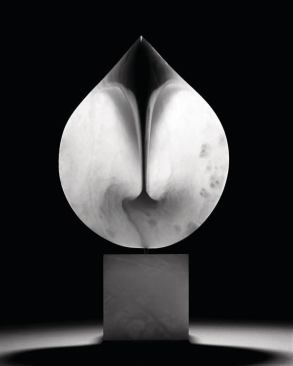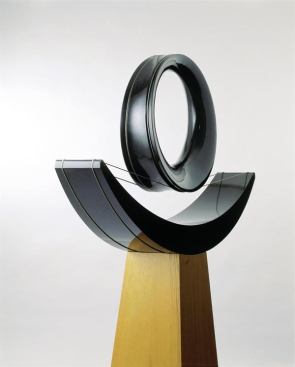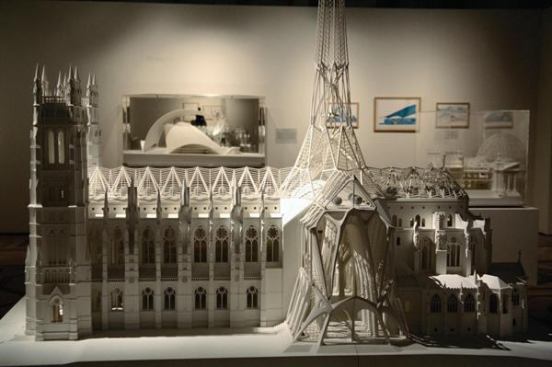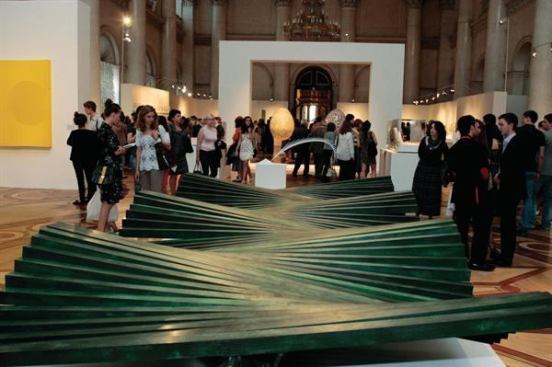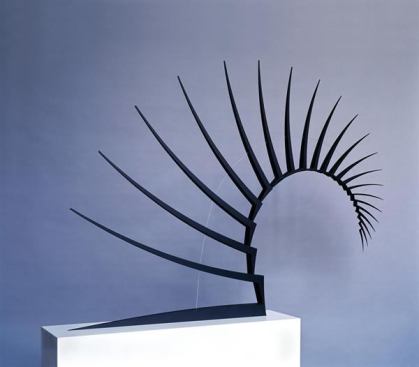Courtesy Santiago Calatrava LLC
“Pure Geometry,” a sculpture from Santiago Calatrava’s exh…
And among these, organic geometric forms—curvilinear volumes, surfaces, and elements inspired by the natural and structural patterns of animals and plants—are the most apparent. Often in Calatrava’s work, symmetrical volumes and spaces are shaped and encompassed by systematized structural skeletons and enveloping surfaces, crafted as grids, lattices, filigrees, and webs. These are assembled rhythmically using nonstandard, sculpted structural members: columns, beams, ribs, fins, braces, bents, buttresses. Tall masts and multiple cables, which marry compression and tension, support and stabilize his structures, frequently with dramatic cantilevers.
Calatrava is fascinated by the way that compressive and tensile forces interact and function in nature, especially in animals. In the human arm, for example, bones (compressive members) work together with muscles, tendons, and ligaments (tensile members), enabling the arm, a long and relatively thin limb, to flex, push, pull, lift, and carry weight; and to rigidly extend straight out from the body. For Calatrava, the arm serves as an organic model suggesting how a large-scale, elegantly proportioned structure could be designed to be load-bearing and stable, yet movable. Similarly, structural characteristics of spines and rib cages, trees, flowers, and seashells suggest how buildings could be shaped and structured.
Limb and spine metaphors are especially apparent in a number of Calatrava’s sculptures on display in the Hermitage exhibit. Seemingly defying gravity, such sculptures—“Beak,” “Cascade,” “Feather”—are stabilized and made rigid by sometimes invisible rods or wires passing through and firmly connected to the individual segments. Like his project models, Calatrava’s intricately crafted sculptures elicit a “wow”—and then invite closer inspection to understand what keeps them standing.
